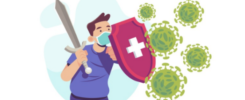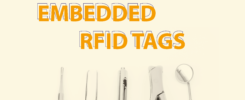One of the main precautions that are taken to contain Coronavirus is social distancing.
In the absence of information on potential contagion situations, social distancing can only be pursued through strict restrictions on the movement of persons, or lockdown. However, these restraints have dramatic social and economic consequences, and can only be sustained for a limited period.
In light of these problems, some countries have resorted to technology, developing contact tracing solutions.
But what is contact tracing?
In the field of public health, it is the process of identifying people who may have come into contact with an infected person and the subsequent collection of information on such contacts.
Its main purposes are to:
- Stop the ongoing transmission and reduce the spread of infection;
- Notify anyone who has come into contact with an infected person of the possibility of contracting a possible infection;
- Know the epidemiology of a disease in a particular population.
In short, contact tracing tries to keep track of all the contacts in a confirmed case, to test or monitor them to check if they have also contracted a the virus. The goal is to stop the spread of disease by finding and isolating cases of infection.
How do contact tracing apps develop to contain the infection from Coronavirus work?
- Contact tracing by localization of personal devices: developing a smartphone app that periodically transmits the device location to a central service is simple (PEPP-PT approach): the location information is associated with the users of the devices and stored by the central service (which has access to the results of the Covid-19 virus positivity tests). In this way, it is possible to send a notification to the users of the app who in the previous days have been close to a person who subsequently tested positive and requests them to undergo a test. The necessity to associate the location data with the test results over a period of time means it is necessary to know the identity of the users. Besides, to estimate the proximity time with a positive subject, the location must be frequent and continuous and thus constitutes a true tracking of the movements of people.
- Contact tracing by recording the proximity of personal devices: Apps of this type recognize proximity with positive cases and do not identify the users of the devices. The technology used is the BLE (Bluetooth Low Energy), present in almost all smartphones and allows a form of wireless communication at close range used by IoT (Internet of Things) sensors allowing a rough estimate to be made of the distance of the transmitting device from the receiving device. The Apps of two smartphones that are in the communication range exchange messages containing a unique identifier, which cannot be associated with the user of the smartphone that transmits it. Whoever installs and uses an app of this type is able to record all the identification of smartphones having the same active app that are located at close range, selecting for storage only those that are a few meters away, for which close contact is repeated for a while compatible with the possibility of contagion: this is the typical situation of a place of work or study, of a public means of transport. But how does the smartphone user know that one of the identifiers stored by the app belongs to a positive case?
In this case, unlike the first, the registered contact identifiers are not sent to the central service, but it is the app that periodically queries the central service (DP^3T approach), acquires the identifiers associated with the reported positive cases and compares them with the contact identifiers recorded on the smartphone: with these elements, the risk factor of contagion for the user of the APP is calculated and (if applicable) an invitation to undergo the test is displayed, without this invitation being sent to the central service.
What are the main contacts tracing solutions already in use to contain Coronavirus infection?
- Corona 100m the app made in South Korea, by crossing the user’s geolocation data with public government databases (data collected by cameras and other sensors), allows users to see the date on which a patient had confirmation of the positivity, his nationality, his gender, his age and his movements, and of course, as the name of the app says, the distance from potential risky places. Specifically, when someone enters a radius of 100 meters from where a person registered as having Coronavirus, they receive a push notification.
- TraceTogether the Singapore app uses Bluetooth to determine when a smartphone is close to another one on which the application has been installed. The two phones exchange anonymous Ids, the data is encrypted and stored exclusively on the user’s smartphone. If a user is positive at Covid-19, he or she will be asked to provide the data recorded by the app. It is a list of anonymous IDs that the infected person’s phone has approached. That’s all: no geolocation, nor is personal data collected.
- Health Code the chinese system is integrated into the Alipay (Alibaba payment system) and WeChat (the “Chinese Whatsapp”) applications. Thanks to the movements of the people, the time spent in the places of the epidemic, the exposure to potential carriers of the virus and the access to many other databases (video surveillance, cameras, purchases executed digitally), the system automatically assigns people a Qrcode corresponding to one of the three codes (green, yellow, red). Thus it determines who is to be quarantined and provides authorization to enter in shops, in malls, and offices.
As for the countries of Europe, the use of the contact tracing app is bound to the guidelines for the development of contact tracing apps issued by the European Authorities.
What are the European guidelines?
- respect the privacy rules and in particular the guidelines resulting from the advice of the Council of European Privacy Guarantors (EDPB;
- be developed in close coordination with health authorities;
- installation is voluntary and these technologies must be removed as soon as they cease to be useful;
- should be preferred technologies that protect privacy, such as Bluetooth;
- data must be anonymized and the identity of the persons must not be traced;
- apps must be interoperable across Europe, to work if someone crosses borders;
- must be designed with the best standards in the epidemiological, IT security and accessibility fields;
- must be safe and effective.
Concerning interoperability, the apps of the various European countries must be able to exchange data homogeneously. With location tracking the question does not arise. On the contrary, with tracking using Bluetooth Low Energy (BLE) technology there is a certain fragmentation that depends on the brands and models of smartphones and operating systems.
Google and Apple together
To overcome this problem, Google and Apple have announced a joint project to integrate into their mobile operating systems an API (Application Program Interface) specifically for software companies that develop, with BLE technology, contact tracing apps aimed at mitigating the spread of Covid-19. The distribution of the app through the respective App Stores allows limiting the distribution to apps exclusively developed on behalf of governments and health authorities.
What kind of devices should we use?
So far the debate has focused on apps and smartphones, but the data can be collected by other devices, such as wristbands, fitness trackers for outdoor activities, or devices developed ad hoc, obviously compliant with the guidelines.
Sources: https://aulascienze.scuola.zanichelli.it/come-te-lo-spiego/2020/05/13/linformatica-del-contact-tracing/
https://www.tracetogether.gov.sg/
https://www.wired.it/internet/regole/2020/04/16/coronavirus-regole-europa-app-contact-tracing/

